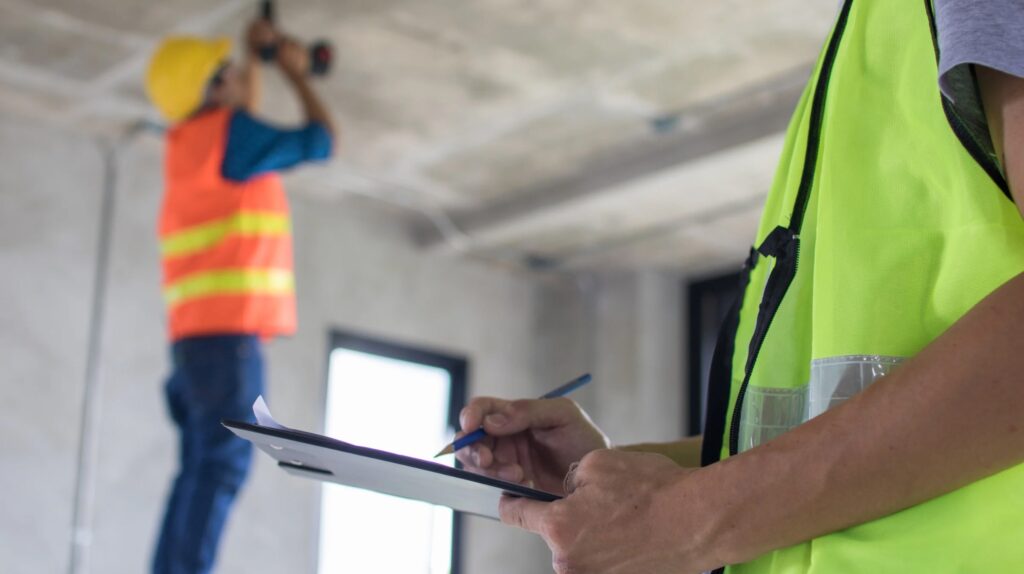A Guide to Identifying Worksite Hazards in Property Restoration
Posted October 1, 2024

In the property restoration industry, ensuring the safety of your crew is not just a regulatory obligation—it’s crucial for maintaining a productive work environment. Hazards are often present, whether you’re dealing with flood damage, fire restoration, or mould remediation. Identifying and managing these hazards early on can help prevent injuries, delays, and costly setbacks. Below is a guide designed to help Canadian property restoration contractors better identify and address job site risks.
Familiarize Yourself with the CCOHS Hazard Identification Guidelines
A good starting point is to review the Canadian Centre for Occupational Health and Safety (CCOHS) guidelines on hazard identification and assessment. Their protocols are designed to ensure that businesses comply with national safety standards, and they provide a comprehensive approach to identifying both immediate and long-term hazards on the job site.
Property restoration work can expose crews to various risks—from hazardous building materials like asbestos to biological contaminants like mould. By reviewing the CCOHS guidelines, contractors can ensure they’ve covered all bases.
For detailed information, visit CCOHS’ official site.
Conduct Thorough Walk-Around Inspections for Potential Hazards
One of the most effective ways to identify hazards is through a walk-around inspection. Inspect every part of the job site, from the foundation to the roof, noting areas where workers may encounter risks. Pay attention to common hazards such as:
- Slips, trips, and falls: Wet floors, uneven surfaces, or debris left around the site.
- Electrical hazards: Live wires or exposed circuits in fire or water-damaged buildings.
- Airborne contaminants: Mould spores, asbestos, or other hazardous materials that may be present after a fire or flood.
Engage your team during the inspection. Workers who are actively on the site may have noticed potential risks that aren’t immediately visible to a supervisor.
Consider Uncommon or Non-Routine Tasks
In addition to identifying everyday risks, it’s crucial to think about hazards associated with non-routine tasks, such as temporary repairs or equipment maintenance. In property restoration, situations often arise where non-standard procedures introduce new dangers.
For example, setting up temporary electrical wiring or generators, working at heights to repair structural damage, or using specialized machinery in confined spaces can present unique challenges. Ensure that the risks associated with these less frequent operations are part of your hazard assessment and that workers are appropriately trained and equipped with the right personal protective equipment (PPE).
Weather also plays a big role here. In Canada, seasonal factors like heavy snow, freezing rain, and high winds can introduce hazards that wouldn’t exist under normal conditions. Roof collapses, slippery surfaces, and cold-weather fatigue are just a few examples of weather-related risks that need to be monitored and addressed.
Monitor Near Misses and Employee Concerns
Paying attention to near misses and employee feedback is a key step in improving job site safety. These incidents offer valuable insight into hidden hazards that might not be obvious during routine inspections. A near miss, where an accident was narrowly avoided, can serve as a warning that something is wrong.
For example, a worker might notice that a section of a water-damaged floor feels unstable or that a piece of equipment isn’t functioning properly. By reviewing these near misses or addressing complaints, contractors can correct potential issues before they escalate into serious accidents.
Encourage your team to speak openly about any hazards they encounter. A proactive approach to addressing concerns fosters a safety-conscious culture that can prevent future incidents.
Adopt Practical Strategies to Enhance Job Site Safety
In addition to hazard identification, there are practical steps you can take to improve safety on your worksite:
- Daily Safety Meetings: Start each day with a brief safety talk. Discuss the specific hazards of the day, changes in site conditions, or any new equipment or tasks that might pose risks.
- Clear Communication Channels: Restoration projects often involve multiple teams or subcontractors. Establish a clear communication system, whether through two-way radios, apps, or project management software, to ensure that everyone is aware of potential risks.
- Signage and Barriers: Use signs, cones, and barriers to mark hazardous areas such as unstable surfaces, electrical dangers, or rooms with poor ventilation.
- Emergency Response Plans: Every site should have an emergency response plan in place. Ensure workers are trained on how to respond to injuries, chemical spills, or structural collapses. Practice these plans with regular drills, and make sure first-aid kits are easily accessible.
- Ongoing Training: Continuously educate your team about the latest safety procedures, particularly when it comes to handling hazardous materials like asbestos, mould, or lead paint.
Addressing Worker Fatigue and Mental Health for Safer Sites
Property restoration is a demanding field, especially during disaster recovery operations that require long hours and physically exhausting work. Fatigue and mental stress can significantly impact safety, as they reduce focus and increase the likelihood of mistakes. Encourage your team to take regular breaks, provide support for mental health, and promote a work environment that values both productivity and well-being.
Conclusion
Identifying worksite hazards in property restoration is an ongoing task that requires vigilance, proper training, and a proactive mindset. By regularly reviewing safety protocols, conducting thorough inspections, and addressing feedback from workers, contractors can maintain safer worksites and prevent costly accidents. Remember that safety is everyone’s responsibility, and creating a culture of openness and communication can go a long way in mitigating risks.

